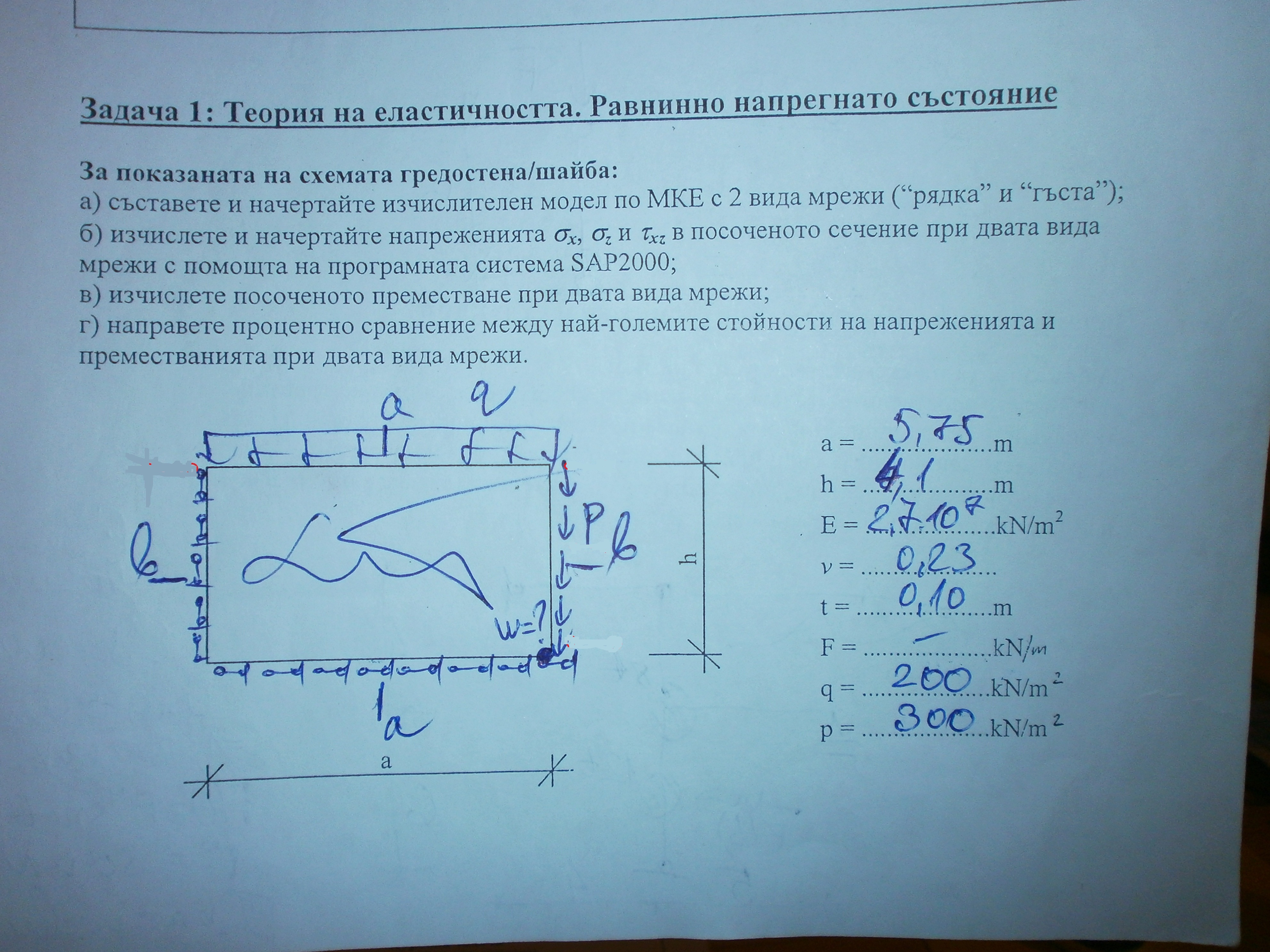StoyanAndreev
Structural
Hi, guys! A friend of mine, who is still in the university has this very simple problem to solve with FEA:

As you see this is a rectangular wall with some uniform edge loads. The problem the girl encountered when analyzing with SAP2000 v.12 was infinitely large displacement of the bottom right node (about 1E+09). I told her that her structure is ill-supported. I also modelled it and I had about the same displacements, so I was sure it is ill-supported. I explained this, but when she went to her assisten professor he told her, that it is absolutely good with boundary conditions - horizontal supports on bottom edge and vertical supports on the left edge). I think I am right, but I want to here some opinions. Thank you!
My Best regards, Stoyan Andreev

As you see this is a rectangular wall with some uniform edge loads. The problem the girl encountered when analyzing with SAP2000 v.12 was infinitely large displacement of the bottom right node (about 1E+09). I told her that her structure is ill-supported. I also modelled it and I had about the same displacements, so I was sure it is ill-supported. I explained this, but when she went to her assisten professor he told her, that it is absolutely good with boundary conditions - horizontal supports on bottom edge and vertical supports on the left edge). I think I am right, but I want to here some opinions. Thank you!
My Best regards, Stoyan Andreev
